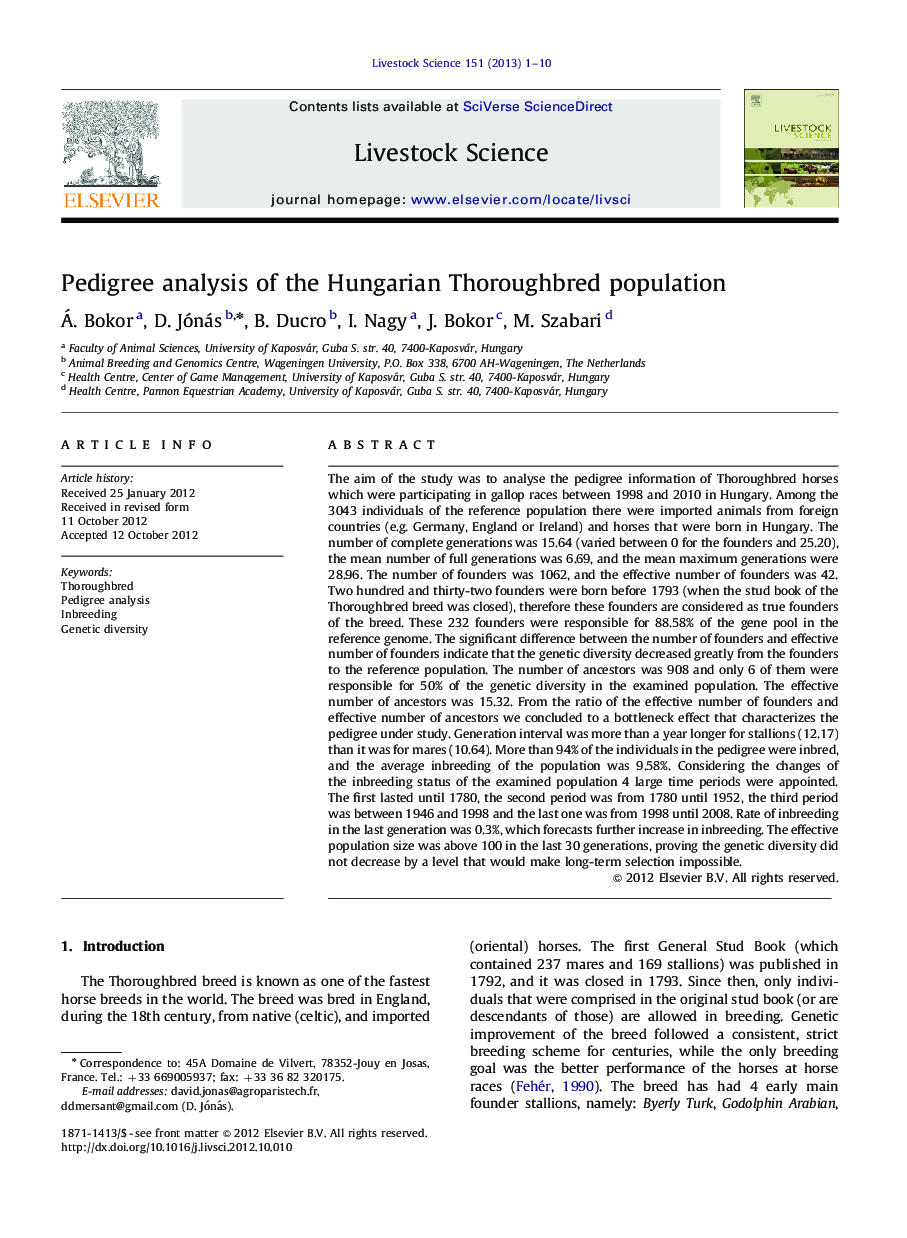| کد مقاله | کد نشریه | سال انتشار | مقاله انگلیسی | نسخه تمام متن |
|---|---|---|---|---|
| 5790389 | 1109493 | 2013 | 10 صفحه PDF | دانلود رایگان |
عنوان انگلیسی مقاله ISI
Pedigree analysis of the Hungarian Thoroughbred population
ترجمه فارسی عنوان
تجزیه و تحلیل شجره نامه از جمعیت خالص مجارستانی
دانلود مقاله + سفارش ترجمه
دانلود مقاله ISI انگلیسی
رایگان برای ایرانیان
کلمات کلیدی
خالص تجزیه و تحلیل شجره نامه، درختکاری، تنوع ژنتیکی،
موضوعات مرتبط
علوم زیستی و بیوفناوری
علوم کشاورزی و بیولوژیک
علوم دامی و جانورشناسی
چکیده انگلیسی
The aim of the study was to analyse the pedigree information of Thoroughbred horses which were participating in gallop races between 1998 and 2010 in Hungary. Among the 3043 individuals of the reference population there were imported animals from foreign countries (e.g. Germany, England or Ireland) and horses that were born in Hungary. The number of complete generations was 15.64 (varied between 0 for the founders and 25.20), the mean number of full generations was 6.69, and the mean maximum generations were 28.96. The number of founders was 1062, and the effective number of founders was 42. Two hundred and thirty-two founders were born before 1793 (when the stud book of the Thoroughbred breed was closed), therefore these founders are considered as true founders of the breed. These 232 founders were responsible for 88.58% of the gene pool in the reference genome. The significant difference between the number of founders and effective number of founders indicate that the genetic diversity decreased greatly from the founders to the reference population. The number of ancestors was 908 and only 6 of them were responsible for 50% of the genetic diversity in the examined population. The effective number of ancestors was 15.32. From the ratio of the effective number of founders and effective number of ancestors we concluded to a bottleneck effect that characterizes the pedigree under study. Generation interval was more than a year longer for stallions (12.17) than it was for mares (10.64). More than 94% of the individuals in the pedigree were inbred, and the average inbreeding of the population was 9.58%. Considering the changes of the inbreeding status of the examined population 4 large time periods were appointed. The first lasted until 1780, the second period was from 1780 until 1952, the third period was between 1946 and 1998 and the last one was from 1998 until 2008. Rate of inbreeding in the last generation was 0.3%, which forecasts further increase in inbreeding. The effective population size was above 100 in the last 30 generations, proving the genetic diversity did not decrease by a level that would make long-term selection impossible.
ناشر
Database: Elsevier - ScienceDirect (ساینس دایرکت)
Journal: Livestock Science - Volume 151, Issue 1, January 2013, Pages 1-10
Journal: Livestock Science - Volume 151, Issue 1, January 2013, Pages 1-10
نویسندگان
Á. Bokor, D. Jónás, B. Ducro, I. Nagy, J. Bokor, M. Szabari,
